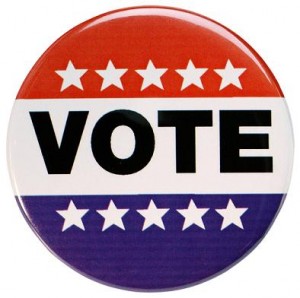For some Americans, understanding systematic racism is a top priority. Sociology scholars explain that racism does not simply entail harboring ill feelings toward people of different races, but also the structural ways the American cultural and political system have disadvantaged Black people for centuries. [Read more…]
Does Getting Less Sleep Affect Your Health?
 Over centuries, the human body has developed a natural rhythm that uses biological and environmental factors to determine when to sleep and eat. But continued advances in technology – starting with the light bulb and moving all the way to on demand entertainment – allows people to ignore these natural rhythms in a phenomenon that researchers call “social jet lag.” [Read more…]
Over centuries, the human body has developed a natural rhythm that uses biological and environmental factors to determine when to sleep and eat. But continued advances in technology – starting with the light bulb and moving all the way to on demand entertainment – allows people to ignore these natural rhythms in a phenomenon that researchers call “social jet lag.” [Read more…]
Can Money Buy Happiness?
Many Americans are plagued by the “if-only” syndrome. Data show that most people believe if they could only get a raise, a new house, a new car, or some other material possession, they would finally be happy. Not surprisingly, studies demonstrate that buying things does not lead to happiness. [Read more…]
Debt and your health
 U.S. consumers carry more than $11.6 trillion in debt – money owed to outside lenders such as banks and credit card companies. What does that mean for the average American family? A total of $15,000 in credit card debt, $154,000 in mortgage debt and $33,000 in student loans. While those numbers are certainly harmful to our financial health, there is new evidence that all of this debt is also bad for our physical health. [Read more…]
U.S. consumers carry more than $11.6 trillion in debt – money owed to outside lenders such as banks and credit card companies. What does that mean for the average American family? A total of $15,000 in credit card debt, $154,000 in mortgage debt and $33,000 in student loans. While those numbers are certainly harmful to our financial health, there is new evidence that all of this debt is also bad for our physical health. [Read more…]
New evidence about the federal food stamps program
 Nearly 45 million American receive help purchasing food each year through the Supplemental Nutrition Assistance Program (SNAP), commonly called food stamps. Here on EBL, we’ve written about the federal program in the past, specifically how it helps keep families out of poverty. [Read more…]
Nearly 45 million American receive help purchasing food each year through the Supplemental Nutrition Assistance Program (SNAP), commonly called food stamps. Here on EBL, we’ve written about the federal program in the past, specifically how it helps keep families out of poverty. [Read more…]
Do alternative medicine treatments help us save money?
 As our society continues to debate how to improve the U.S. health care system, some researchers and policy makers are asking whether alternative therapies such as massage, acupuncture and aromatherapy are effective, and whether they help save money by resolving medical problems.
As our society continues to debate how to improve the U.S. health care system, some researchers and policy makers are asking whether alternative therapies such as massage, acupuncture and aromatherapy are effective, and whether they help save money by resolving medical problems.
On a personal note, I’ve always been intrigued by medical treatments that fall outside of western medicine. I received acupuncture when I was pregnant with my son. He was breech, and there is some evidence that acupuncture can help babies to turn into the right position. (After trying several other treatment options including chiropractic adjustments and yoga, he did turn around, although it’s difficult to determine exactly what helped.)
A new systematic review published in British Medical Journal Open analyzes cost studies on complementary and integrative medicine from 2001-2010. For the analysis, the researchers found 204 cost analysis studies of alternative medicine treatments. But only 22 of the studies met quality standards to be included in the review.
In an analysis that reviews broad array of medical conditions, it’s difficult to come up with a single conclusion. But the review did find that some alternative treatments yielded the same or better results as traditional medical treatments. In total, ten treatments showed cost savings. Among them are acupuncture for breech delivery, acupuncture for low back pain, tai chi for avoiding hip fractures and nutritional supplements to prevent cataracts.
The review concludes that there is some real potential in saving money in our health care system and helping people heal faster through alternative medicine treatments. But more high-quality studies are needed that measure economic as well as health outcomes, and combine alternative treatments with typical care methods to measure how they work together.
The facts on Social Security
More than 75 years ago, the U.S. government created Social Security, the federal insurance program that provides benefits to individuals and their families who can no longer work because of disability, retirement or death. The program is complex, and its details are often debated among politicians.
Earlier this year, the Economic Policy Institute and the National Academy of Social Insurance published a guide that explains the facts about the Social Security program to young people. The document includes detailed, evidence-based explanations of Social Security’s history, beneficiaries, financing, and shortfalls. It pulls data from the Office of the Chief Actuary of the Social Security Administration, Congressional Budget Office, the Employee Benefits Research Institute, and the Center for Retirement Research.
Here’s a sampling of interesting facts from the document:
- In 2012, about 159 million individuals or 94% of the American workforce, worked in Social Security-covered employment. (Those not covered include government employees covered by other insurance programs, farm workers who do not meet minimum work requirements and students.)
- Approximately 55 million Americans received Social Security benefits in 2011. Seventy percent were retirees; 19 percent were disability beneficiaries and 11 percent were survivors of deceased workers.
- Without Social Security income, it is estimated that nearly half senior citizens would be living in poverty. Instead, fewer than 10 percent of seniors live in poverty.
- Because the U.S. population is aging and people are living longer, the Social Security program is projected to run up a deficit. The projected shortfall is 2.67% of taxable earnings over the next 75 years.
- There are a variety of ways to compensate for the deficit including raising taxes, expanding coverage, investing in equities, increasing the retirement age and reducing cost-of-living increases.
The guide concludes that Social Security fulfills an important need in our society as an insurance program for American workers. To learn more about Social Security benefits and about how your payroll taxes are used, it’s worth checking out this evidence-based document.
The science of political campaigns
 The 2012 presidential candidates will spend billions of dollars to encourage people to vote for them this year. Independent analysts currently estimate that President Barack Obama and Republican nominee Mitt Romney will spend more than $6 billion in their campaigns. But how do they really know that money will bring them votes?
The 2012 presidential candidates will spend billions of dollars to encourage people to vote for them this year. Independent analysts currently estimate that President Barack Obama and Republican nominee Mitt Romney will spend more than $6 billion in their campaigns. But how do they really know that money will bring them votes?
It turns out there is an emerging cadre of researchers using scientific techniques – specifically the randomized controlled trial – to find out which campaign strategies actually bring people to the polls.
Among them are Todd Rogers, a behavioral psychologist at Harvard University, and David Nickerson, a political science professor at the University of Notre Dame. Together, they conducted a study in the 2008 Democratic primary in Pennsylvania that attempted to determine whether get-out-the-vote reminder calls made a significant difference in voter turnout.
For the study, Rogers came up with some questions that would ask people about their plans on voting day such as “What do you think you’ll be doing before you head to the polls on Tuesday?” and “Where do you think you’ll be coming from that day?” His theory – based cognitive psychology principles – was that these questions would plant a seed voters’ minds to helps them remember to vote.
The researchers used the questions in a randomized controlled trial. Some citizens received phone calls asking the questions, others received the standard get-out-the-vote call and others did not receive a phone call. They found a dramatic result: People who were asked the planning questions were twice as likely to vote as people who were not.
There are other examples of scientific studies applied to campaign strategies. Rogers and a colleague at Yale University found evidence that messages which tell people high turnout is expected are more effective at motivating voters than messages which emphasize low voter turnout.
And a review of field studies in get-out-the-vote campaigns found that many of these strategies improve voter turnout, but tend to mobilize well-represented groups of people and miss under-represented groups – effectively widening disparities in the electorate.
Here at EBL, we think it is great news that social scientists are applying scientific methods to the art of political campaigning – especially where so much money is involved. And we hope it’s information that candidates use in their campaigns.
Real evidence linking taxes and death
 With U.S. income taxes due today, there will surely be banter around water coolers across the country on the subject of taxes, including a myriad of jokes about paying Uncle Sam.
With U.S. income taxes due today, there will surely be banter around water coolers across the country on the subject of taxes, including a myriad of jokes about paying Uncle Sam.
“If my business gets much worse, I won’t have to lie on my next tax return.”
“When it comes to taxes, there are two types of people. There are those that get it done early, also known as psychopaths, and then the rest of us.”
“Drive carefully. Uncle Sam needs every taxpayer he can get.”
It turns out, there’s actually something to that last one.
A study in the most recent issue of the Journal of the American Medical Association, reviewed data on fatal road crashes from the National Highway Traffic Safety Administration from the past 30 years. The study found there are consistently more fatal car crashes on Tax Day each year, compared with other days. On average there are 13 more deaths – approximately a 6 percent increase – compared with other days.
What is going on? The study authors speculate that added stress of a deadline could lead to more distracted driving, or that people could be consuming more alcohol on tax day. Whatever the reason, they suggest a public health campaign to remind people to drive carefully on Tax Day.
Drive safely today!
The evidence on child abuse
 No one needs an academic study to understand that child abuse and neglect has horrible effects on children and families. The toll on young people and their caregivers – emotionally, socially and developmentally – is tremendous. But the problem also takes a broader toll on our health care system and society as a whole.
No one needs an academic study to understand that child abuse and neglect has horrible effects on children and families. The toll on young people and their caregivers – emotionally, socially and developmentally – is tremendous. But the problem also takes a broader toll on our health care system and society as a whole.
A new study from the U.S. Centers for Disease Control quantifies the toll on society in financial terms. The study examined nearly 600,000 confirmed child maltreatment cases over the course of a year. Approximately 1,740 of the cases resulted in the death of a child. It found the financial costs associated with these cases to be $124 billion, which includes the costs of medical care, special education, the criminal justice system and lost productivity.
Researchers totaled the lifetime cost for each victim of child maltreatment who lived at $210,012 – a figure the matches the cost of other health conditions such as stroke, which has lifetime cost per person estimated at $159,846, or type 2 diabetes, which is estimated between $181,000 and $253,000.
Much of the data for the study came from a project at Cornell called the National Data Archive on Child Abuse and Neglect (NDACAN), housed in the Bronfenbrenner Center for Translational Research (BCTR). The project makes high-quality datasets available to researchers, including data from individual studies and annual federal data collection efforts, such as state child abuse and neglect and foster care statistics.
“This study very likely underestimates the actual burden as we learn more about the impact of early childhood adversity on brain development and health and well-being across the life span,” said John Eckenrode, director of NDACAN, professor of human development and director of the BCTR.
“Fortunately, there are now evidence-based programs that may prevent child maltreatment and the associated costs to society,” he said. Among them is the Nurse Family Partnership, a program founded at the College of Human Ecology that aims to improve the lives of disadvantaged mothers and their children.
The take home message: Child abuse and neglect is a big problem. The better we can understand its intricacies and impacts, the better we’ll be able to prevent it in the future.






